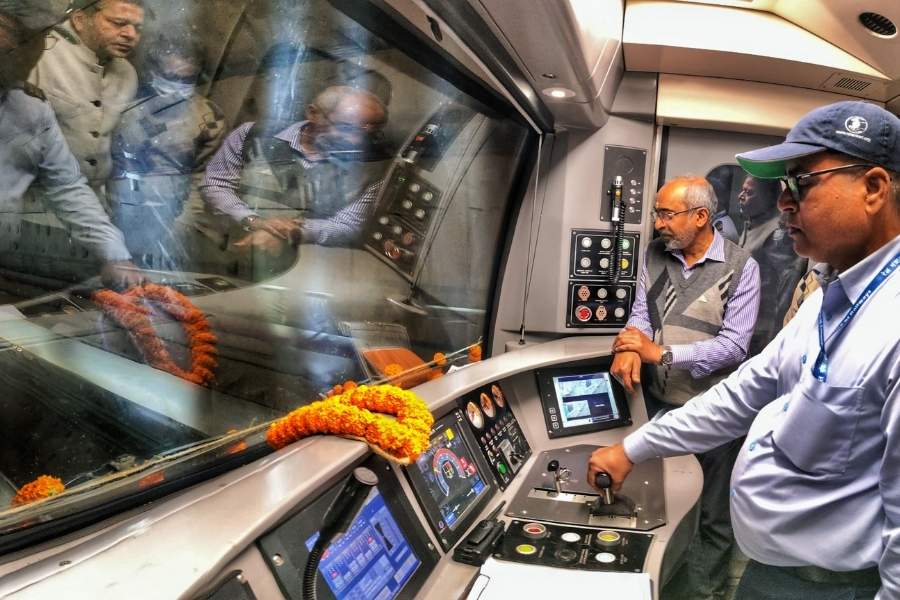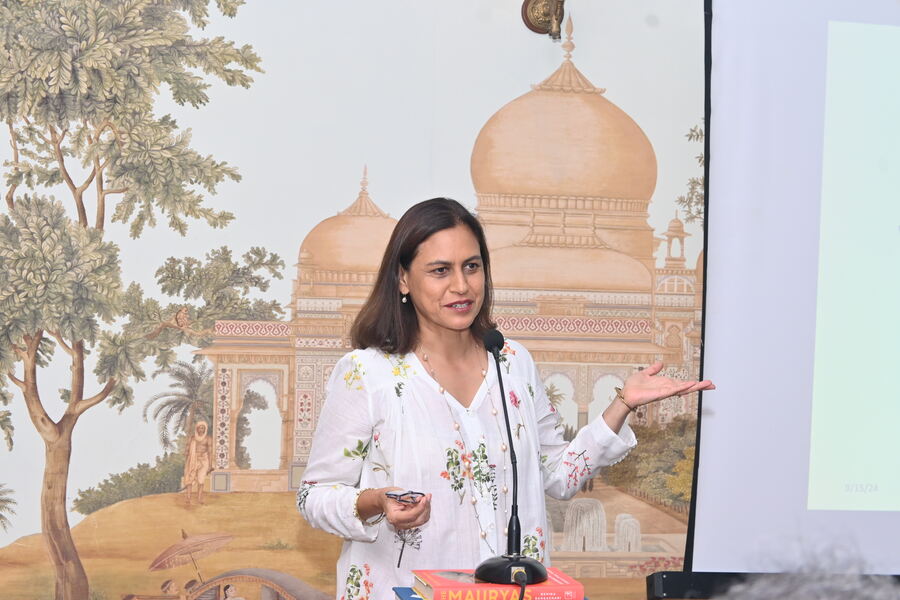
Tea, arguably the world’s most popular beverage, has a history as rich and complex as its multifarious flavours. How many types of tea are there in the world? How did ancient China shape the destiny of tea? How did tea come to India? All this and more were answered with aplomb by Husna-Tara Prakash at ‘The Story of Tea’ presented by the Glenburn Culture Club, in association with the Indo-British Scholars’ Association (IBSA), at the Glenburn Penthouse on September 15, with My Kolkata as digital partner
Photos: Amit Pramanik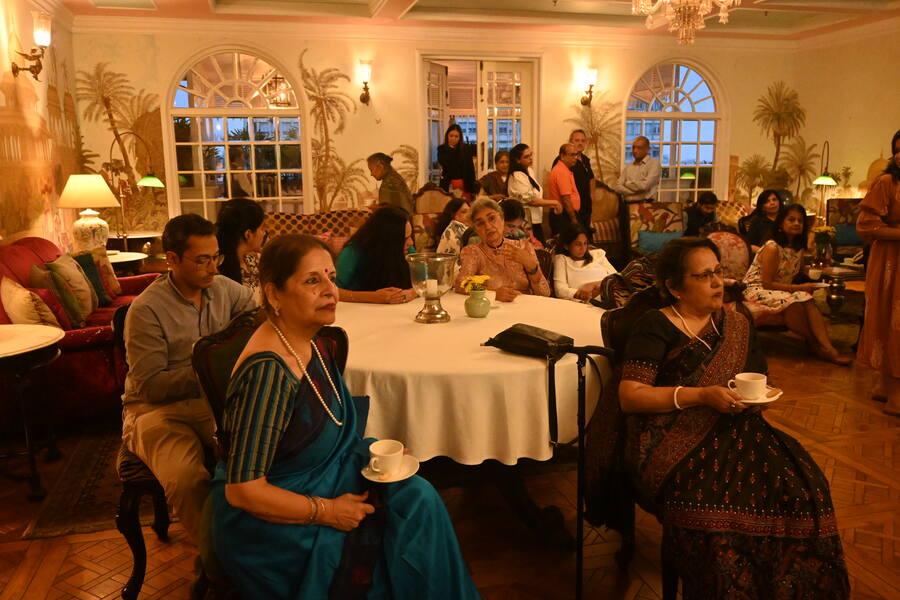
In the seventh century AD, tea was a drink limited to the Chinese elite. Made from seven bushes, tea was a prized imperial possession, usually drunk only by the emperor. It was only in the eighth century that consumption of tea was gradually democratised and it became the national drink of China, outlined Husna-Tara, founder-director of Glenburn Hospitality, as guests, tea cups in hand, savoured the presentation
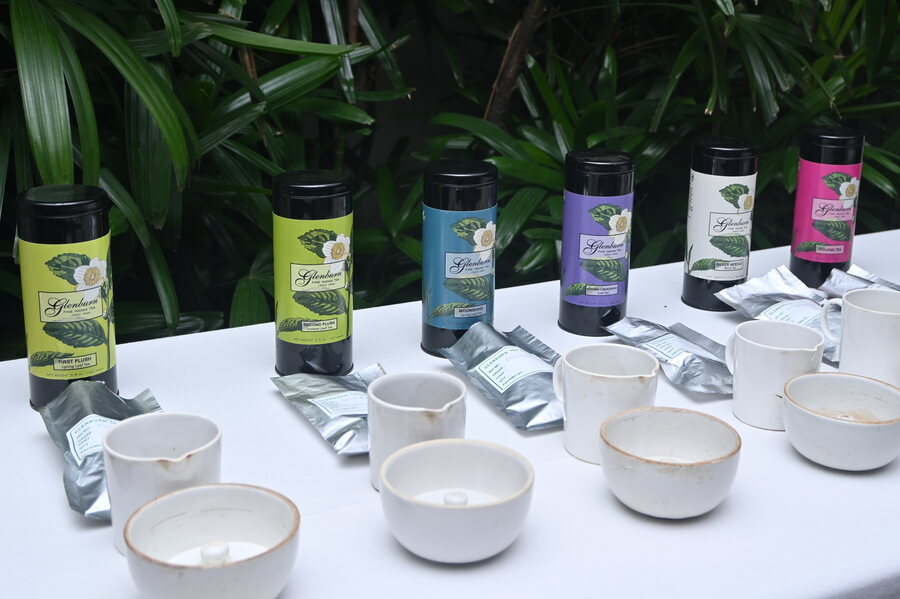
“When the water is boiling, it must look like the eyes of a fish and give off but a hint of a sound. When at the edges, it chatters like a bubbling spring and looks like innumerable pearls strung together. That’s when it has reached the second stage. When it leaps like majestic breakers and sounds like the swelling waves, it’s at its end. Any more and the water will be spoiled. It should be thrown away immediately,” said Husna-Tara, deferring to the ancient tea master, Yu Lu. The tea-drinking elite around the world agree that this is the only way in which to boil water for tea, she added
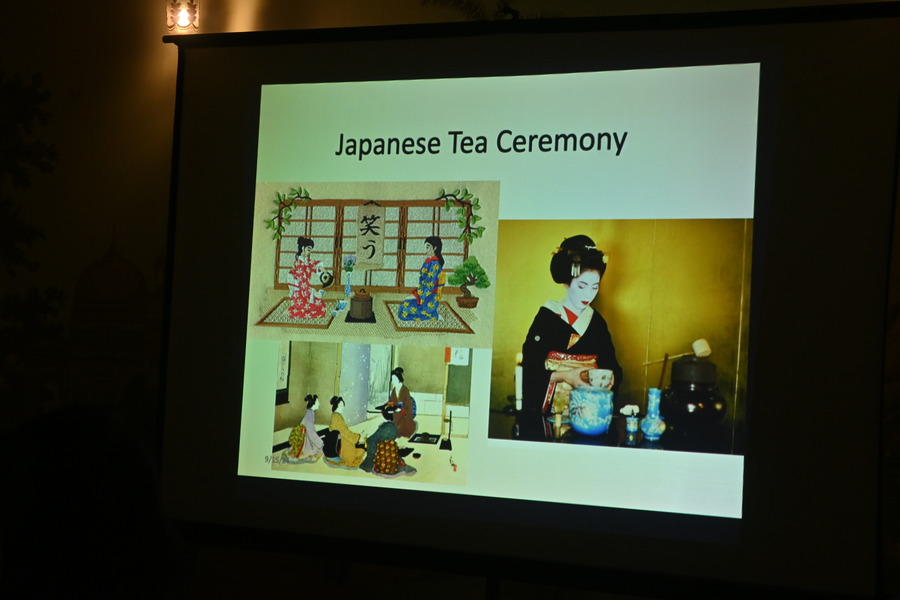
Husna-Tara proceeded to explain how the Song dynasty in China changed the method of brewing tea. Instead of boiling the leaves, they started by boiling the water and then putting in the tea leaves, similar to how most of us have our tea today. They also started powdering the tea and then whisking it — just another way of brewing tea — a method that inspired the Japanese tea ceremony. This is how the idea of tea spread to Japan, where drinking green tea for meditation was pioneered

“It wasn’t until the 17th century that tea reached Europe, with the Dutch being the first ones to take it up. Seen as having plenty of health benefits, its popularity grew, particularly in England, when the princess, Catherine of Braganza, brought along a chest of tea with her, starting the English obsession with tea, especially ‘afternoon tea’,” described Husna-Tara
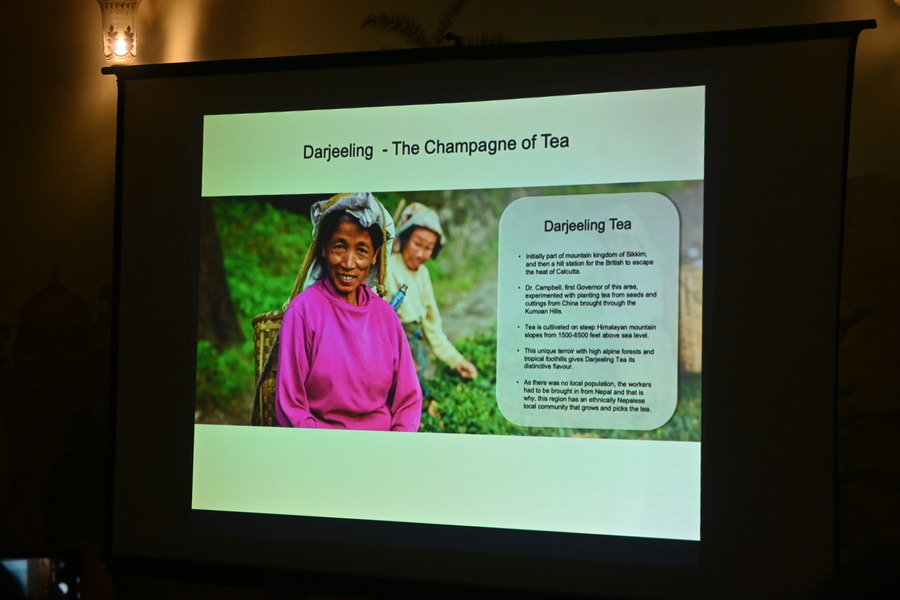
Towards the second half of the evening, Husna touched upon how tea came to Darjeeling from China through Robert Fortune, a British botanist. The British then started a plantation in Assam using the camellia assamica, a distinct variety of lower-growing tea, indigenous to Assam. Over time, Darjeeling tea gained in value due to its unique microclimate in the shadow of the Kanchenjunga. The British expanded tea cultivation across India, including the Dooars, the Kangra Valley, the Western Ghats and the Nilgiris

Before taking questions, Husna wrapped up her presentation by reflecting on the modern market of tea, dominated by China and India. Darjeeling tea, considered as precious as champagne and recognised with a Geographical Index (GI), retains its pre-eminence, while places Sri Lanka and Kenya export most of their produce. Other countries in South America and Africa also produce significant amounts of tea, as does Nepal. In spite of the steady popularity of coffee, tea remains the first drink of choice across continents and cultures, concluded Husna
